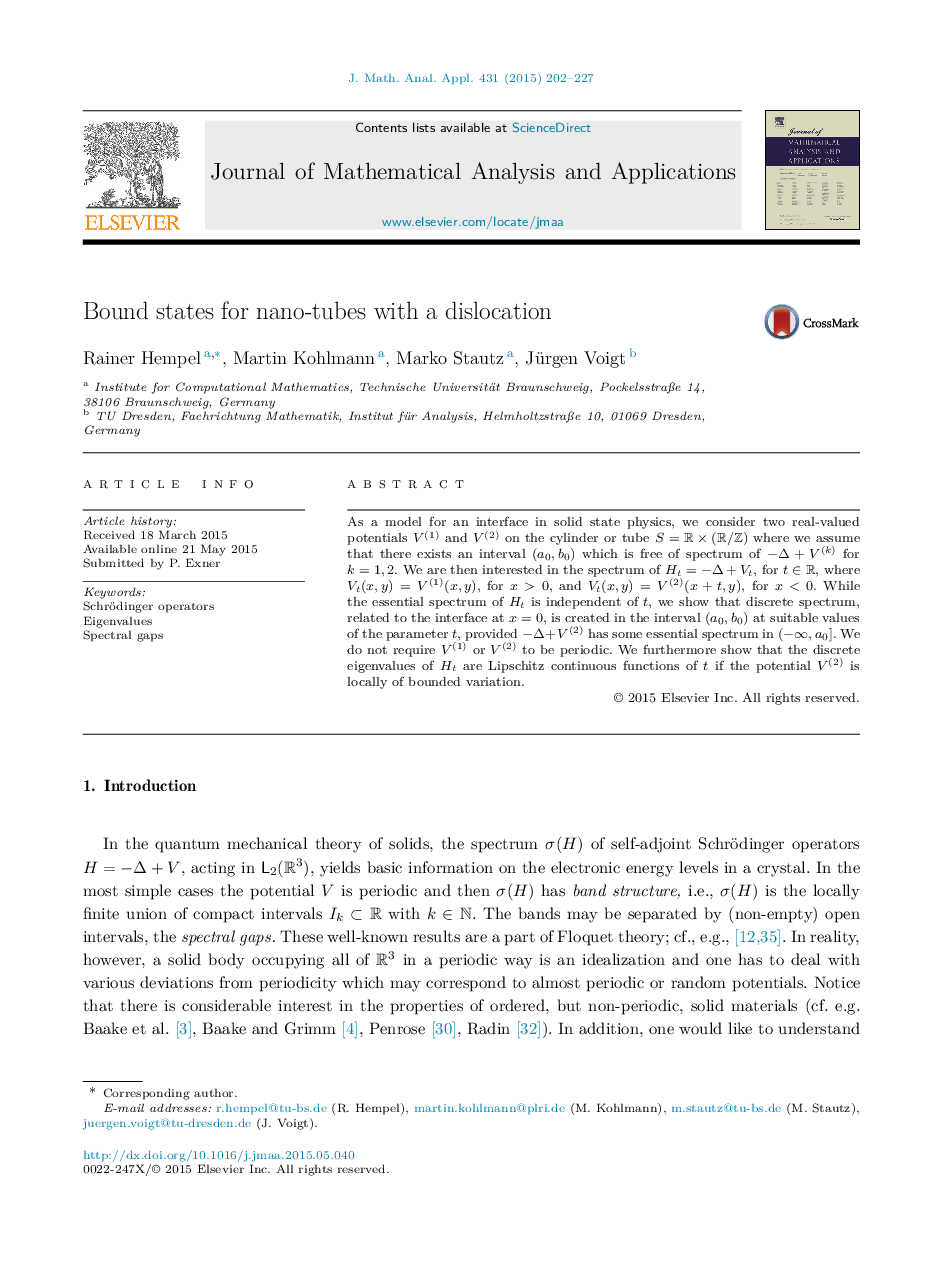| Article ID | Journal | Published Year | Pages | File Type |
|---|---|---|---|---|
| 4614866 | Journal of Mathematical Analysis and Applications | 2015 | 26 Pages |
As a model for an interface in solid state physics, we consider two real-valued potentials V(1)V(1) and V(2)V(2) on the cylinder or tube S=R×(R/Z)S=R×(R/Z) where we assume that there exists an interval (a0,b0)(a0,b0) which is free of spectrum of −Δ+V(k)−Δ+V(k) for k=1,2k=1,2. We are then interested in the spectrum of Ht=−Δ+VtHt=−Δ+Vt, for t∈Rt∈R, where Vt(x,y)=V(1)(x,y)Vt(x,y)=V(1)(x,y), for x>0x>0, and Vt(x,y)=V(2)(x+t,y)Vt(x,y)=V(2)(x+t,y), for x<0x<0. While the essential spectrum of HtHt is independent of t , we show that discrete spectrum, related to the interface at x=0x=0, is created in the interval (a0,b0)(a0,b0) at suitable values of the parameter t , provided −Δ+V(2)−Δ+V(2) has some essential spectrum in (−∞,a0](−∞,a0]. We do not require V(1)V(1) or V(2)V(2) to be periodic. We furthermore show that the discrete eigenvalues of HtHt are Lipschitz continuous functions of t if the potential V(2)V(2) is locally of bounded variation.
